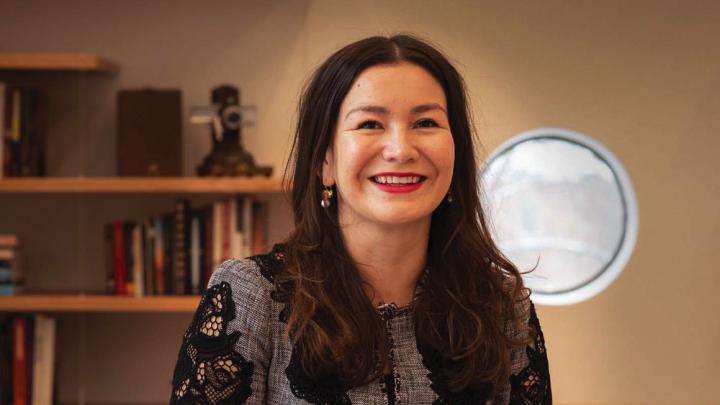Shawon Kinew is interested in how early modern sculptors pushed the boundaries of what sculpture should be able to do. “Even though they’re carving in hard marble,” explains the assistant professor of the history of art and architecture, “they’re making it look like fur or flesh that’s so soft that it looks like you could poke it and it would spring back….It’s been created to make you stop in your tracks and go, ‘Wow, meraviglia, it’s marvelous.’” Kinew remembers a similar feeling from her days as a child ballet dancer: That was “the first aesthetic experience I had where I was just completely enraptured by what I was seeing.” As a child, she split her time between Winnipeg and her home community, an Anishinaabe reserve in northwestern Ontario. Her father, an “intellectual force,” participated in dialogues between academic scientists and Native American knowledge keepers on physics and cosmology. “That was the milieu that I grew up in,” Kinew says; it helped lay the foundation for her curiosity about ideas and the human experience. In college at the University of Toronto, she was immediately captivated by art history. “The best course I took was a six-person class on Caravaggio where we didn’t read any secondary literature—only biographies from the seventeenth century.” After a Ph.D. from Harvard and postdoc at Stanford, she returned to Cambridge in 2018, in art history and as Shutzer assistant professor at the Radcliffe Institute. In her course “Old Masters in a ‘New’ World,” Kinew challenges students to think about how canonical European artists fit into the new landscape of art history. “Michelangelo has a lot to teach us about gender and sexuality,” she says. “Titian and Van Dyck have a lot to say about race and colonization. We just weren’t asking the right questions before."
Shawon Kinew

Shawon Kinew
Photograph by Stu Rosner
You might also like
The Picture of Freedom
A Boston Athenaeum exhibit explores an abolitionist with Harvard ties.
Jeff Lichtman Appointed Dean of Science
Neuroscientist to lead Harvard Faculty of Arts and Sciences division
New Kennedy School Dean Announced
Stanford political scientist Jeremy Weinstein set to lead
Most popular
More to explore
How is Artificial Intelligence Being Taught at Harvard?
A new Harvard course on artificial intelligence teaches students how to use the tool responsibly.
Civil War American Writer and Abolitionist John Greenleaf Whittier
Homes of the poet and abolitionist, whose verses were said to have inspired Abraham Lincoln.







